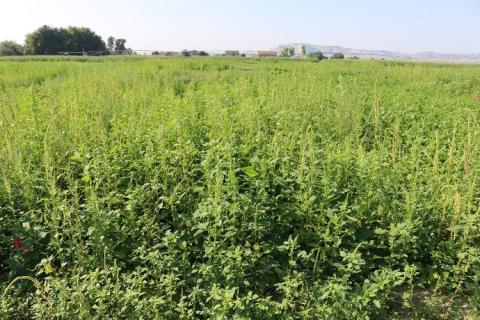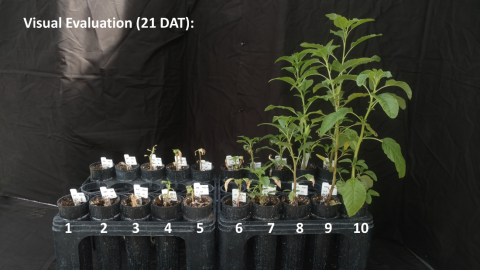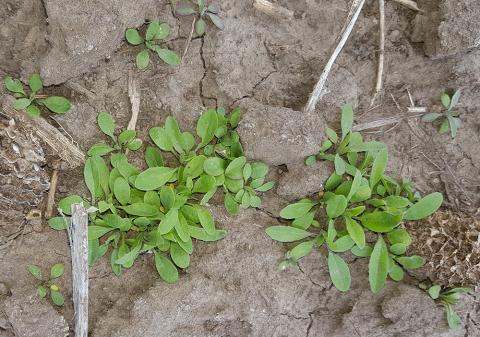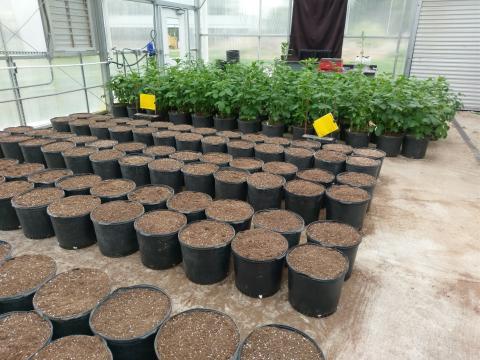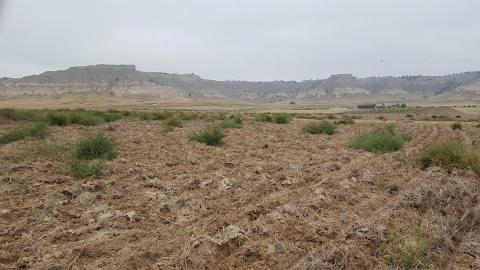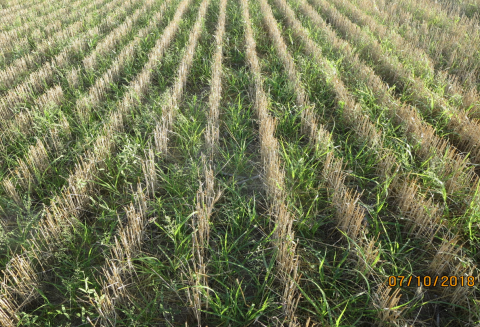Palmer Amaranth Control in Dry Bean
January 14, 2019
Residual herbicides applied at or before planting are critically important to controlling emerged Palmer amaranth in dry bean. Research at the Panhandle REC assessed the efficacy of PRE and pre-plant incorporated (PPI) residual herbicide programs.
Research Report: Prevalence and Mechanism of Atrazine Resistance in Waterhemp from Nebraska
October 26, 2018
Researchers studied waterhemp populations in eastern Nebraska to evaluate the efficacy of PRE and POST herbicide applications and the mechanism of atrazine resistance. Here's what they found and take-home messages to apply to your operation.
Management of Glyphosate-Resistant Marestail in Fall
October 25, 2018
For successful marestail management in the fall, apply herbicides after harvest while weather conditions remain favorable (air temperature above 50°F). Effective control now may negate the need for an early spring burndown application.
Weed Science School Oct. 31 near Mead
October 11, 2018
Update your weed science knowledge and skills when university, government, and industry speakers join to address current weed science issues and recommendations for improving herbicide applications.
Competitiveness of Herbicide-Resistant Waterhemp with Soybean
September 26, 2018
The objective of this study was to evaluate the competitiveness of three herbicide-resistant Nebraska waterhemp populations with soybean in a greenhouse environment. The results indicate the importance of enhancing early-season crop competitiveness.
CoAXium™ Wheat Production System and Aggressor™ Herbicide for Controlling Grassy Weeds
August 30, 2018
A new herbicide-tolerant wheat production system was officially unveiled in 2018 and offers growers a new means to control grassy annual weeds in wheat.
Fall Strategies for Weed Control in Winter Wheat
August 29, 2018
Managing weeds at least two weeks prior to planting winter wheat and then controlling winter annuals this fall are important to reducing disease, saving soil moisture, and achieving top yields next summer.
Can You Help Weed Scientists Assess IWM Knowledge and Use?
August 27, 2018
How much do you know about Integrated Weed Management (IWM) strategies and their application to your operation? What information do you need?
